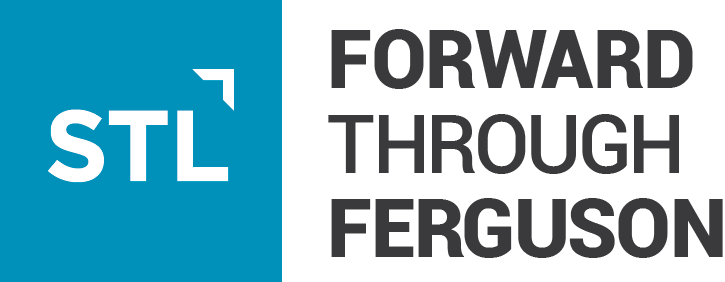Summary of Terms – Youth at the Center
A+ Scholarship
A Missouri higher education scholarship program that provides scholarship funds to eligible graduates of A+ designated high schools who attend a participating public community college or vocational/technical school, or certain private two-year vocational/technical schools. The award is $500 per year with a total potential value over four years of $2,000.
Source: Missouri Department of Higher Education, https://dhe.mo.gov/ppc/grants/aplusscholarship.php
Access Missouri Financial Assistance Program
A need-based grant program designed for undergraduate Missouri residents to increase students’ access to their school of choice. Award amount and eligibility are determined by the Expected Family Contribution (EFC) as calculated through the Free Application for Federal Student Aid (FAFSA), and Missouri Department of Higher Education funding. The maximum award for a public four-year institution is $2,850 and the minimum award is $1,500.
Source: Missouri Department of Higher Education, https://dhe.mo.gov/ppc/grants/accessmo.php; Southeast Missouri State University, https://www.semo.edu/sfs/financialaid/MO_aid_progs.html; Missouri State University, https://www.missouristate.edu/FinancialAid/scholarships/Freshman.htm
Alive and Well STL Campaign
A community-wide effort focused on reducing the impact of toxic stress and trauma on health and wellbeing; led by the St. Louis Regional Health Commission.
Source: St. Louis Regional Health Commission, https://www.stlrhc.org/work/alive-well-stl/
Alternative Interventions
A set of school disciplinary systems designed to provide a safe educational environment that enables students to develop and apply the skills, knowledge, behaviors, and values needed to realize their maximum potential. They are used as an alternative to policies such as zero tolerance, suspension, and expulsion, which have been shown to be related to a number of negative outcomes for students including elevated rates of school dropout, poor school climate, and low academic achievement.
Source: Indiana University, https://www.indiana.edu/~equity/docs/Alternatives_to_Expulsion.pdf; Duke University, https://childandfamilypolicy.duke.edu/pdfs/familyimpact/2010/Alternatives_to_Suspension.pdf; Palm Beach Schools, https://www.palmbeachschools.org/safety/
Anti-Racism Professional Development Training
A type of training program used to address racism and the changing shape of race relations. It offers tools to transform people’s attitudes and behaviors, intergroup relationships, and social institutions and policies. It is grounded in a conceptual analysis of racial and ethnic oppression and social change, address the institutional and structural dimensions of racism, and often includes Racial Identity Development work.
Source: Aspen Institute, https://www.aspeninstitute.org/sites/default/files/content/docs/rcc/training.pdf
Apprenticeship
A combination of on-the-job training and related instruction in which workers learn the practical and theoretical aspects of a highly skilled occupation. Apprenticeship programs can be sponsored by individual employers, joint employer and labor groups, and/or employer associations.
Source: Department of Labor, https://www.dol.gov/apprenticeship/; White House, https://www.whitehouse.gov/sites/default/files/omb/memoranda/2014/m-14-15.pdf
Assistance Teams
School-based problem-solving teams that support children who are at risk for school failure and for over-referral to special education. They are designed to ensure that students are provided the opportunity to succeed in the general education environment such that they are only referred for special education evaluation when interventions and modifications have been unsuccessful and data justifies possible separation from the general education program.
Source: National Institute of Health, https://www.ncbi.nlm.nih.gov/pubmed/9009801; Albuquerque Public Schools, https://www.aps.edu/about-us/policies-and-procedural-directives/procedural-directives/j.-students/school-assistance-team-general-screening-and-student-intervention-guidelines; Madison Lake School District, https://www.madison-lake.k12.oh.us/docs/0-What%20is%20the%20Intervention%20Assistance%20Team.pdf
Bright Flight
A merit-based Missouri higher education scholarship program that encourages top-ranked high school seniors to attend approved Missouri postsecondary schools. To be eligible students must be a Missouri resident, and have a composite score on the ACT or SAT in either the top three percent of all Missouri students taking those tests, or the top 4th or 5th percentiles of all Missouri students taking those tests.
Source: Missouri Department of Higher Education, https://dhe.mo.gov/ppc/grants/brightflight.php
Child Development Account (CDA)
A universal, long-term asset-building accounts established for children as early as birth and allowed to grow over their lifetime. Most are seeded with an initial deposit of $500 to $1,000 and built by contributions from family, friends, and the children themselves. In addition, accounts are augmented by savings matches and other incentives. Savings in CDAs are usually restricted to financing higher education, starting a small business, buying a home, or funding retirement. The programs also couple financial education with savings.
Source: Federal Reserve Bank St. Louis, https://www.stlouisfed.org/publications/bridges/spring-2009/child-development-accounts-innovative-plans-build-savings-for-youth-starting-at-birth; Washington University in St. Louis, https://csd.wustl.edu/Publications/Documents/WP09-54.pdf; Corporation for Enterprise Development https://cfed.org/assets/pdfs/caseforCDAs_webversion.pdf
Child Health Insurance Program (CHIP)
A federal program administered by Missouri’s HealthNet for Kids program and is designed for uninsured children of low-income families who do not have access to affordable health insurance.
Source: Benefits.gov, https://www.benefits.gov/benefits/benefit-details/1606
Child Serving Systems
A systematic approach that engages child-serving agencies (health, mental health, education, child welfare, first responders, and criminal justice) to develop evidence-based services that address the impact of trauma on the children they serve, especially those at risk of developing severe emotional disorders and their families. More generally, the system is charged with providing a safe and healthy environment for children and adolescents.
Source: The National Child Traumatic Stress Network, https://www.nctsnet.org/nctsn_assets/pdfs/Service_Systems_Brief_v1_v1.pdf; Pennsylvania Recovery and Resiliency, https://www.parecovery.org/principles_cassp.shtml; Persad Center, https://persadcenter.org/community-impact/making-child-serving-systems-stronger-and-more-effective
Community Eligibility Provision Program
Program allows schools that predominantly serve low-income children to offer free, nutritious school meals to all students through the National School Lunch and School Breakfast Programs.
Source: USDA’s Food and Nutrition Service (FNS), https://www.fns.usda.gov/school-meals/community-eligibility-provision
Cultural Competency Training
Training that seeks to ensure that organizations and individuals have a defined set of values and principles, and demonstrate behaviors, attitudes, policies and structures that enable them to work effectively cross-culturally. This includes having the capacity to value diversity, conduct self-assessment, manage the dynamics of difference, acquire and institutionalize cultural knowledge, and adapt to diversity and the cultural contexts of the communities they serve.
Source: Georgetown University, https://nccc.georgetown.edu/foundations/frameworks.html
Deferred Action for Childhood Arrivals (DACA)
Program that began in 2012 under the Obama Administration and established that the Department of Homeland Security (DHS) would not deport certain undocumented youth who came to the United States as children. Under a directive from the secretary of DHS, these youth may be granted a type of temporary permission to stay in the U.S. called “deferred action.” In November of 2014, President Obama announced an expansion the DACA program through executive action. However, on February 16, 2015, a federal district court in Texas issued an order that places a temporary injunction on the expanded DACA program, though people may still apply for DACA under the pre-expansion guidelines.
Source: U.S. Department of Homeland Security, https://www.uscis.gov/humanitarian/consideration-deferred-action-childhood-arrivals-daca; National Immigration Law Center, https://www.nilc.org/FAQdeferredactionyouth.html
Denial of Transfer
Refers to the denial of the opportunity for a parent to transfer their child from an unaccredited school to a more successful school.
Source: St. Louis Post-Dispatch, https://www.stltoday.com/news/local/metro/no-shortage-of-legal-advice-for-families-denied-school-transfers/article_056ed7ca-c9c2-5cd0-926e-f5b32288b203.html
EdPlus
An organization that serves teachers, administrators, support staff, and board members of the 61 public school districts in Missouri and Illinois, with the goal of providing services and resources in advocacy and innovation, customized educational solutions, and educational equity.
Source: EdPlus, https://www.edplus.org/serving_members/index.html
House Bill 42 (HB 42)
On 6/26, this bill was vetoed. The bill would have established policy around student transfer.
Source: Missouri House of Representatives, https://www.house.mo.gov/billsummary.aspx?year=2015&bill=HB%2042&code=R
Missouri Department of Elementary and Secondary Education (DESE)
The administrative arm of the State Board of Education. It is primarily a service agency that works with educators, legislators, government agencies, community leaders, and citizens to maintain a strong public education system. The Department’s responsibilities range from early childhood to adult education services.
Source: DESE, https://www.facebook.com/MOEducation/timeline, https://dese.mo.gov/
Missouri Family Support Division (FSD)
A division of the Missouri Department of Social Services that provides help to families with food stamps, health care, child care, child support, and other needs to support their mission to maintain and strengthen Missouri families.
Source: Missouri Department of Social Services, https://dss.mo.gov/fsd/
Missouri Promise
A Missouri higher education scholarship program for students selected based on a combination of financial need and academic potential as demonstrated by a combination of class rank, grade point average, and ACT or SAT scores. The award is $1,000 for the first year and $1,500 for the second year.
Source: Missouri State University, https://www.missouristate.edu/FinancialAid/scholarships/Freshman.htm; Missouri House of Representatives, https://www.house.mo.gov/billtracking/bills151/sumpdf/HB0986I.pdf
Presumptive Eligibility
Eligibility for Medicaid, as based on information about a person’s income and household size and (at state option) information about citizenship, immigration status,and residency.
Source: Medicaid.gov, https://www.medicaid.gov/federal-policy-guidance/downloads/faq-01-24-14-hospital-pe.pdf
Ready by 21
Ready by 21 is a set of innovative strategies developed by the Forum for Youth Investment that helps communities improve the odds that all children and youth will be ready for college, work, and life. They provide standards, tools, training and technical assistance, and ways to measure and track their success.
Source: Ready by 21, https://www.readyby21.org/what-ready-21
Restorative Justice
Restorative justice is an evolving response to harm that respects the dignity and equality of each person, builds understanding, and promotes social harmony through the healing of victims, offenders, and communities.
Source: Missouri State University, https://associations.missouristate.edu/MORJC/What_is_RJ.htm
Safe Schools Act (SSA)
The Missouri Safe Schools Act, which was passed in 1996, primarily deals with the following areas of a school district’s operation: policy development, student admission and enrollment, residency requirements, and reporting and record keeping.
Source: DESE, https://dese.mo.gov/governmental-affairs/legislation/safe-schools-act
School to Prison Pipeline
A national trend where children are funneled out of public schools and into the juvenile and criminal justice systems.
Source: American Civil Liberties Union (ACLU) https://www.aclu.org/issues/racial-justice/race-and-inequality-education/school-prison-pipeline
Self-Sufficiency Model
A Live, Work, Thrive model that suggests that a person’s advancement from poverty to economic self-sufficiency is supported by five critical pillars: family stability, well-being, education and training, financial management, and employment and career management.
Source: Crittenton Women’s Union, https://www.liveworkthrive.org/research_and_tools/bridge_to_self_sufficiency
Supplemental Nutrition Assistance Program (SNAP)
The program, formerly known as food stamps, offers nutrition assistance to millions of eligible, low-income individuals and families and provides economic benefits to communities.
Source: U.S. Department of Agriculture (USDA)’s Food and Nutrition Service (FNS), https://www.fns.usda.gov/snap/supplemental-nutrition-assistance-program-snap
Voluntary Interdistrict Choice Corporation (VICC)
The administrative arm of the State Board of Education. It is primarily a service agency that works with educators, legislators, government agencies, community leaders and citizens to maintain a strong public education system. The Department’s responsibilities range from early childhood to adult education services.
Source: VICC, https://www.choicecorp.org/; Mehlville School District, https://vicc.mehlvilleschooldistrict.com/modules/groups/integrated_home.phtml?&gid=2495230&SID=&t=; Social Science Research Network, https://papers.ssrn.com/sol3/papers.cfm?abstract_id=2300776
Take Action
Change your environment
Build trauma-informed communities and spaces.
Support great school climates
While policy changes are important to changing the landscapes of our schools, it is only effective when paired with culture changes. Engage with your child’s school to facilitate a great school climate and culture for all students, teachers and administrators. This can take the form of attending PTA meetings, starting discussion groups with other parents, or…


